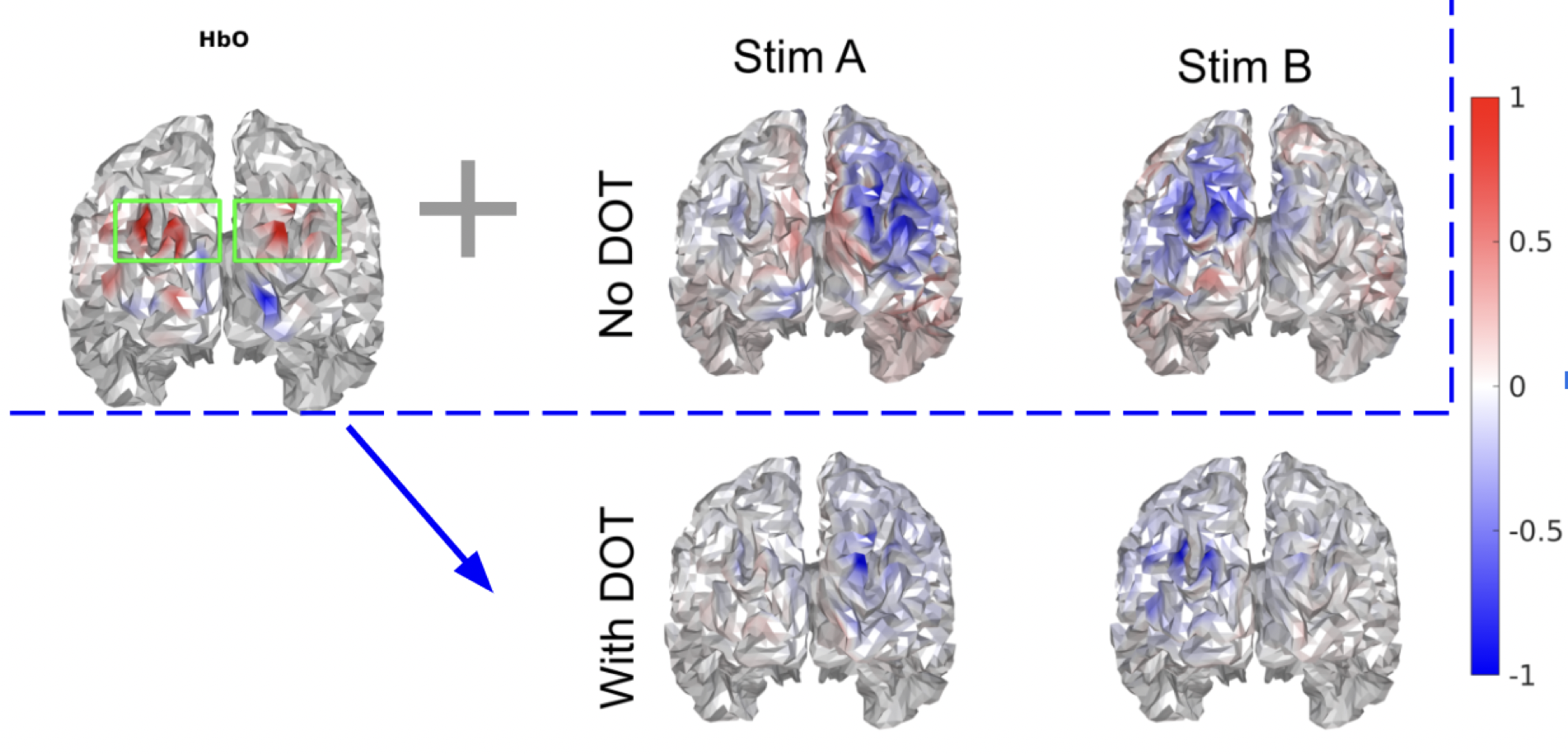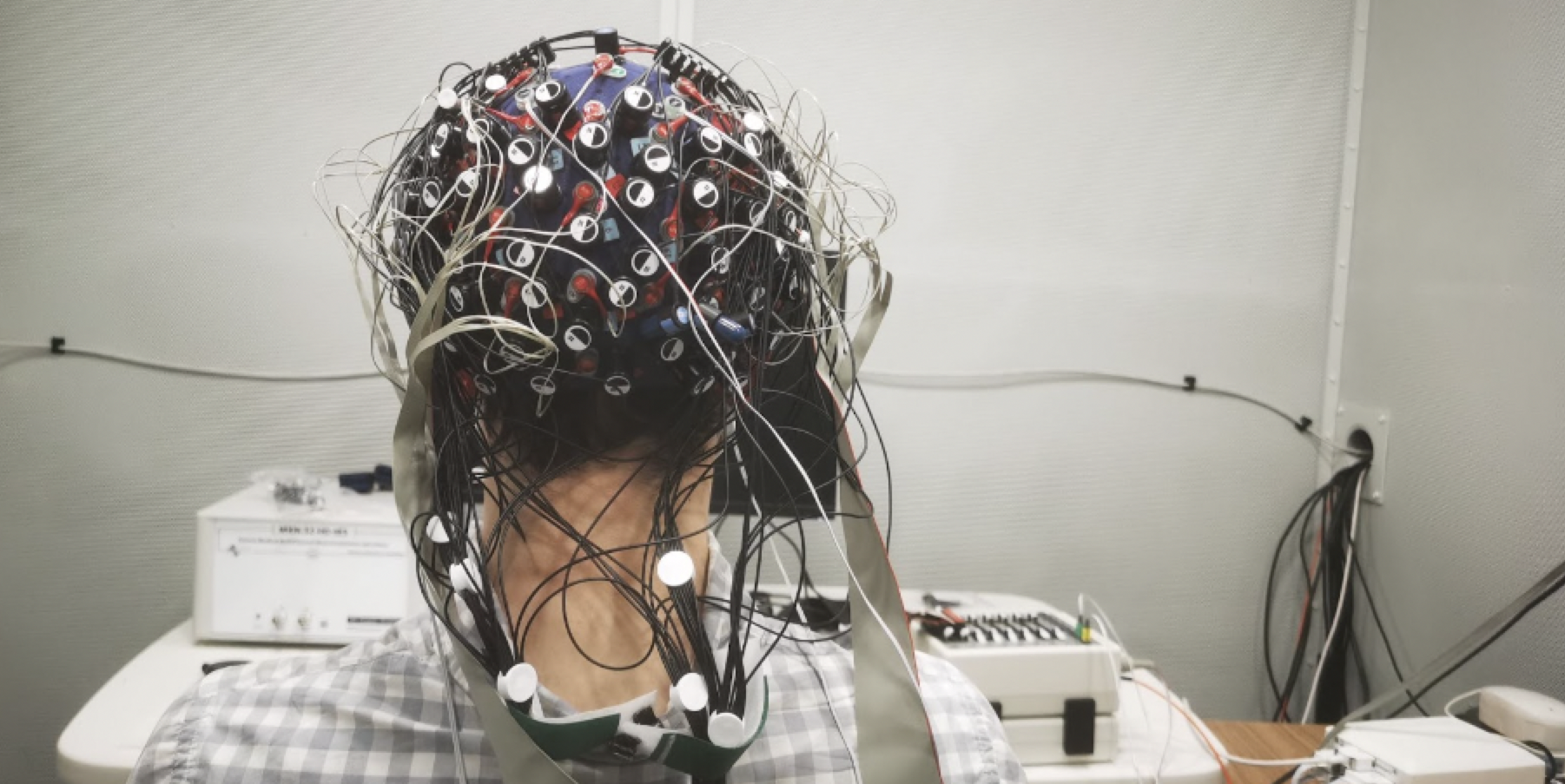Functional Brain Imaging
In collaboration with Prof. Barbara Shinn-Cunningham, the lab is working to better image brain activities using simultaneously recorded NIRS and EEG. Specifically, many of the projects are concerned with utilizing NIRS reconstruction (often referred to as diffuse optical tomography, or DOT) as the spatial prior for EEG source localization, such that neuronal activities can be understood with both spatial and temporal precision. For these projects, we typically use a 64-channel Biosemi ActiveTwo system for EEG recording, and a 24 source x 24 detector NIRx NIRSports system for NIRS measurements.

Jiaming Cao has developed an algorithm (in collaboration with Prof. Ted Huppert) that allows for spatio-temporal source reconstruction of brain activities, which has been validated in both computer simulations and visual experiments on healthy human subjects.

Eli Bulger and Yutian Qin are working to further improve the multimodal imaging method for deeper brain sources, and ultimately image how auditory attention affects brain activities. Eli’s work is focused on understanding how oscillatory activity in the brain is related to hemodynamics in the brain - specifically during auditory attention - and more broadly, how this methodology can improve our understanding of cognitive representations of sensation and perception.
In collaboration with Prof. Matt Smith we are using multimodal techniques, including electrophysiology and near-infrared spectroscopy to characterize brain and body signatures of cognitive state shifts. Characterizing these signatures is important to understand basic questions about how the brain works, such as why are we better at paying attention when we're alert as opposed to drowsy? This line of work could also eventually help develop better diagnostic criteria for complex disease states, such as schizophrenia and Alzheimer's, where patients have different physiologic signatures of their level of alertness compared to neurotypical controls. We measure changes in the brain using near-infrared spectroscopy, EEG, and other neural recording techniques, and compare these to changes in systemic signals, such as heart rate, respiration rate, and pupil diameter.
People involved in this project:
